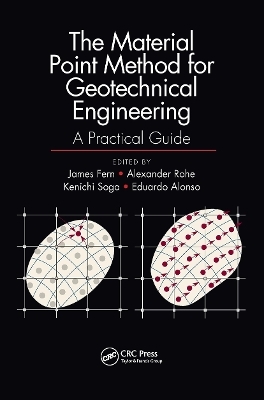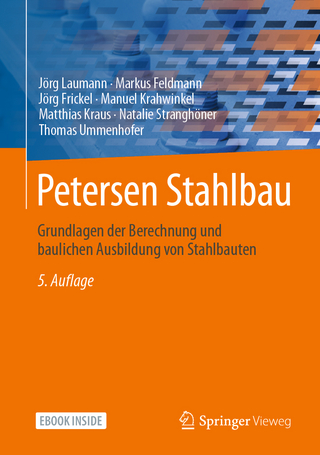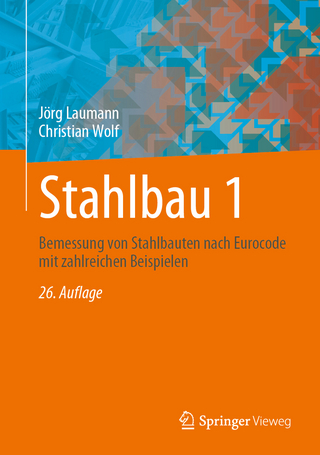
The Material Point Method for Geotechnical Engineering
CRC Press (Verlag)
978-0-367-73194-6 (ISBN)
This practical guide provides the best introduction to large deformation material point method (MPM) simulations for geotechnical engineering. It provides the basic theory, discusses the different numerical features used in large deformation simulations, and presents a number of applications -- providing references, examples and guidance when using MPM for practical applications.
MPM covers problems in static and dynamic situations within a common framework. It also opens new frontiers in geotechnical modelling and numerical analysis. It represents a powerful tool for exploring large deformation behaviours of soils, structures and fluids, and their interactions, such as internal and external erosion, and post-liquefaction analysis; for instance the post-failure liquid-like behaviours of landslides, penetration problems such as CPT and pile installation, and scouring problems related to underwater pipelines. In the recent years, MPM has developed enough for its practical use in industry, apart from the increasing interest in the academic world.
Dr. James Fern is a researcher at UC Berkeley and is working on the applications of the material point method in engineering practice. He has worked as an industry consultant designing caverns and tunnels for hydroelectric power schemes, and using computational geomechanics. He is currently working on the constitutive modelling for large deformation MPM simulations and its application to the 2014 Oso Landslide. Dr. Alexander Rohe is a senior researcher at Deltares and the chairman of the Anura3D community, and specialises in geotechnical engineering of soft soils and computational geomechanics, and is very active in the development of the material point methods. Prof. Kenichi Soga is Chancellor’s Professor at the University of California, Berkeley and was formerly Professor of Civil Engineering at the University of Cambridge, UK. He is a Fellow of the Royal Academy of Engineering and a Fellow of the Institution of Civil Engineers. Prof. Eduardo Alonso is a professor of civil engineering at the Polytechnic University of Catalonia, Sapain. He has several times received the Telford Medal from the Institution of Civil Engineers, and delivered the 57th Rankine Lecture in 2017 in which the MPM was a relevant part of the presentation. He was the honorary editor of Géotechnique in 2017.
Foreword. Acknowledgements. Contributors. List of Common Symbols. Part I: Theory. 1. Computational Geomechanics. 2. Fundamentals of the Material Point Method. 3. Different Formulations and Integration Schemes. 4. Recent Developments to Improve the Numerical Accuracy. 5. Axisymmetric Formulation. 6. Numerical Features used in Simulations. 7. An Introduction to Critical State Soil Mechanics. 8. An Introduction to Constitutive Modelling. Part II: Application. 9. The Granular Column Collapse. 10. Inverse Analysis for Modelling Reduced-Scale Laboratory Slopes. 11. Dyke Embankment Analysis. 12. Landslides in Unsaturated Soil. 13. Preliminary Analysis of a Landslide in the North-West Pacific. 14. Thermal Interaction in Shear Bands: the Vajont Landslide. 15. Excavation-Induced Instabilities. 16. Slope Reliability and Failure Analysis using Random Fields. 17. Jacked Pile Installation in Sand. 18. Cone Penetration Tests. 19. Dynamic Compaction. 20. Installation of Geocontainers. 21. Applications in Hydraulic Engineering. Appendix: Thermal Interaction in Shear Bands. Bibliography. Index.
| Erscheinungsdatum | 16.01.2021 |
|---|---|
| Zusatzinfo | 39 Tables, black and white; 22 Illustrations, color; 205 Illustrations, black and white |
| Verlagsort | London |
| Sprache | englisch |
| Maße | 156 x 234 mm |
| Gewicht | 453 g |
| Themenwelt | Technik ► Bauwesen |
| ISBN-10 | 0-367-73194-0 / 0367731940 |
| ISBN-13 | 978-0-367-73194-6 / 9780367731946 |
| Zustand | Neuware |
| Informationen gemäß Produktsicherheitsverordnung (GPSR) | |
| Haben Sie eine Frage zum Produkt? |
aus dem Bereich


